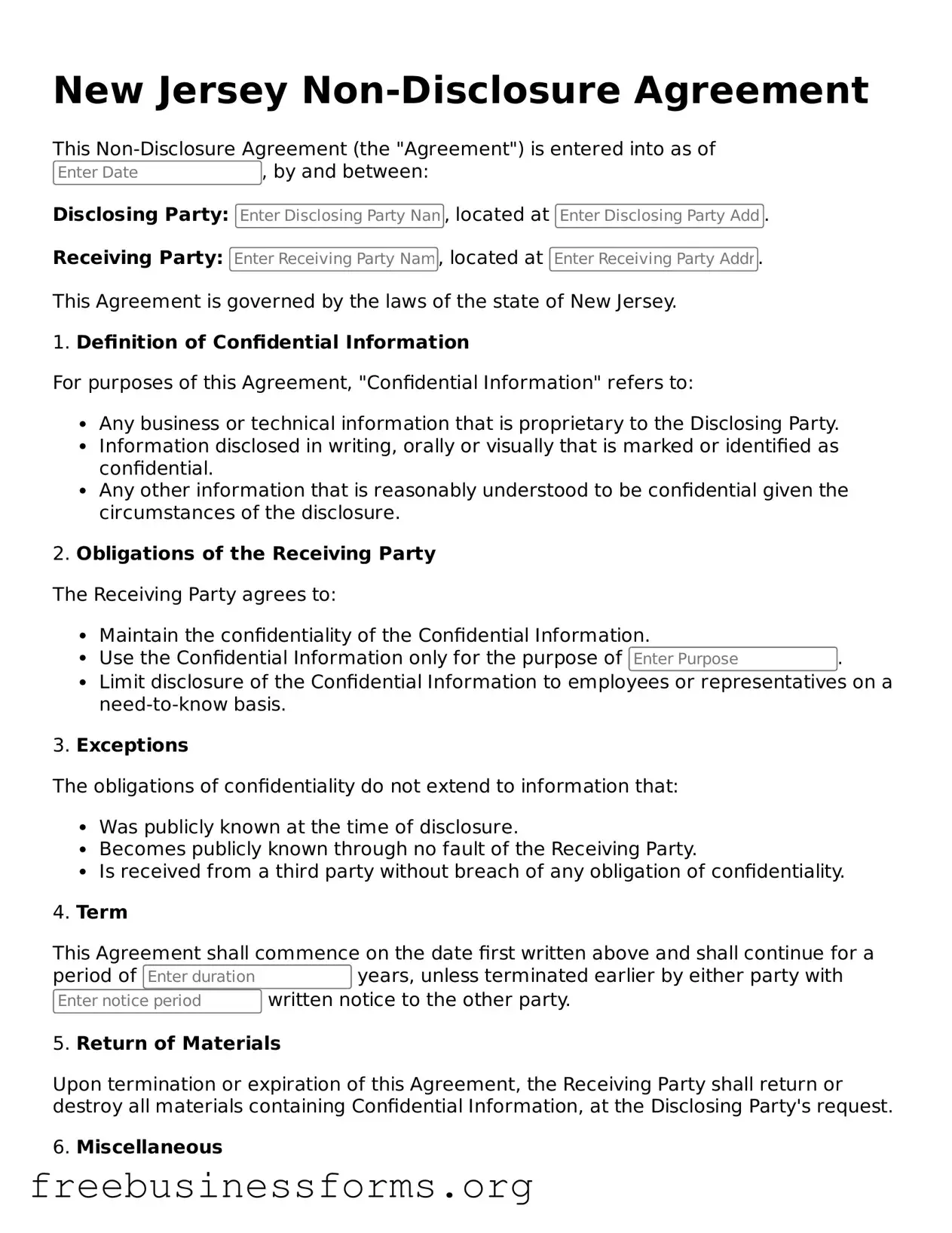Blank Non-disclosure Agreement Template for New Jersey
A New Jersey Non-disclosure Agreement (NDA) is a legal contract that protects confidential information shared between parties. This form is essential for businesses and individuals who want to safeguard sensitive information from being disclosed to unauthorized third parties. Understanding the key elements of an NDA can help ensure that your proprietary information remains secure.
Open Form Here
